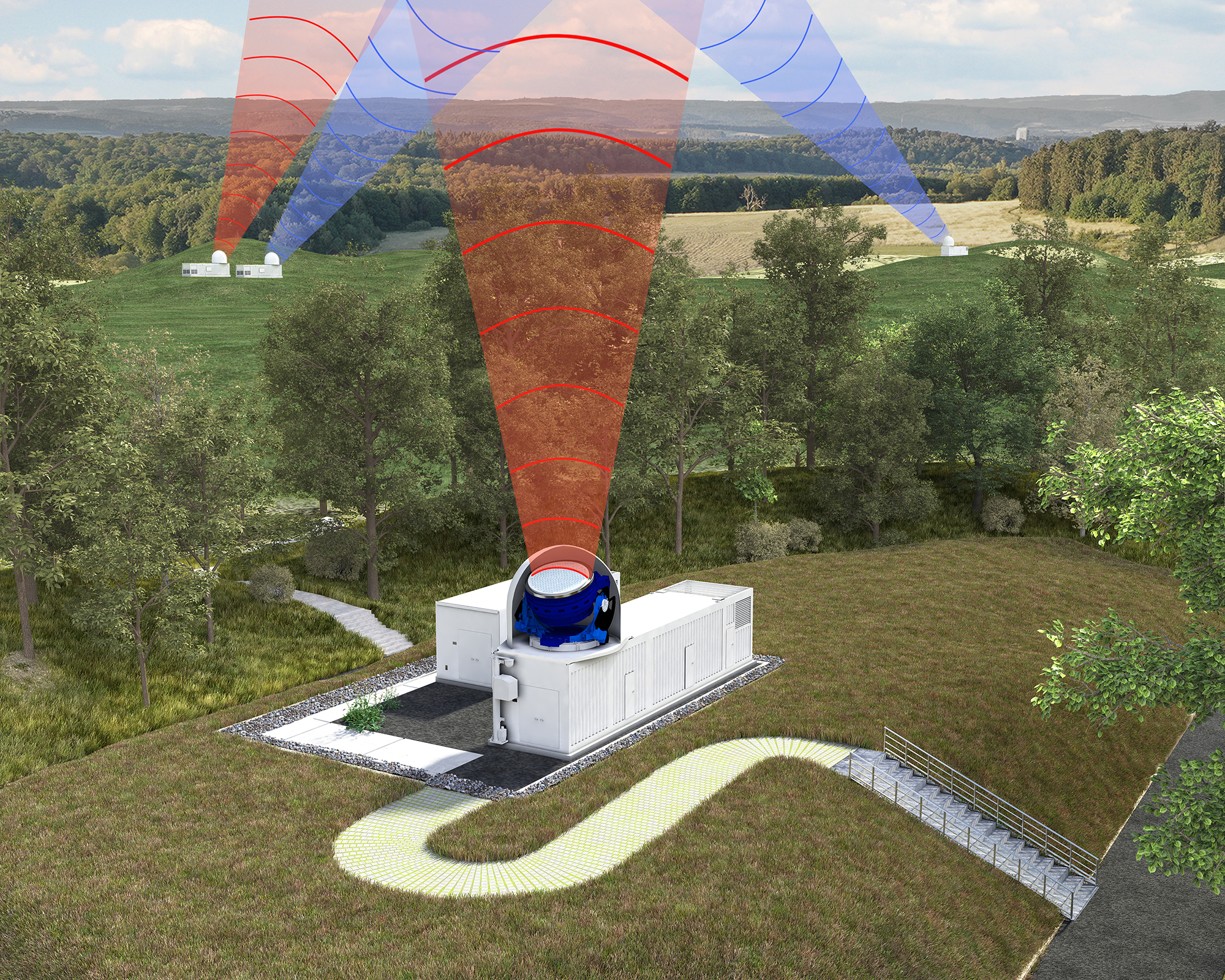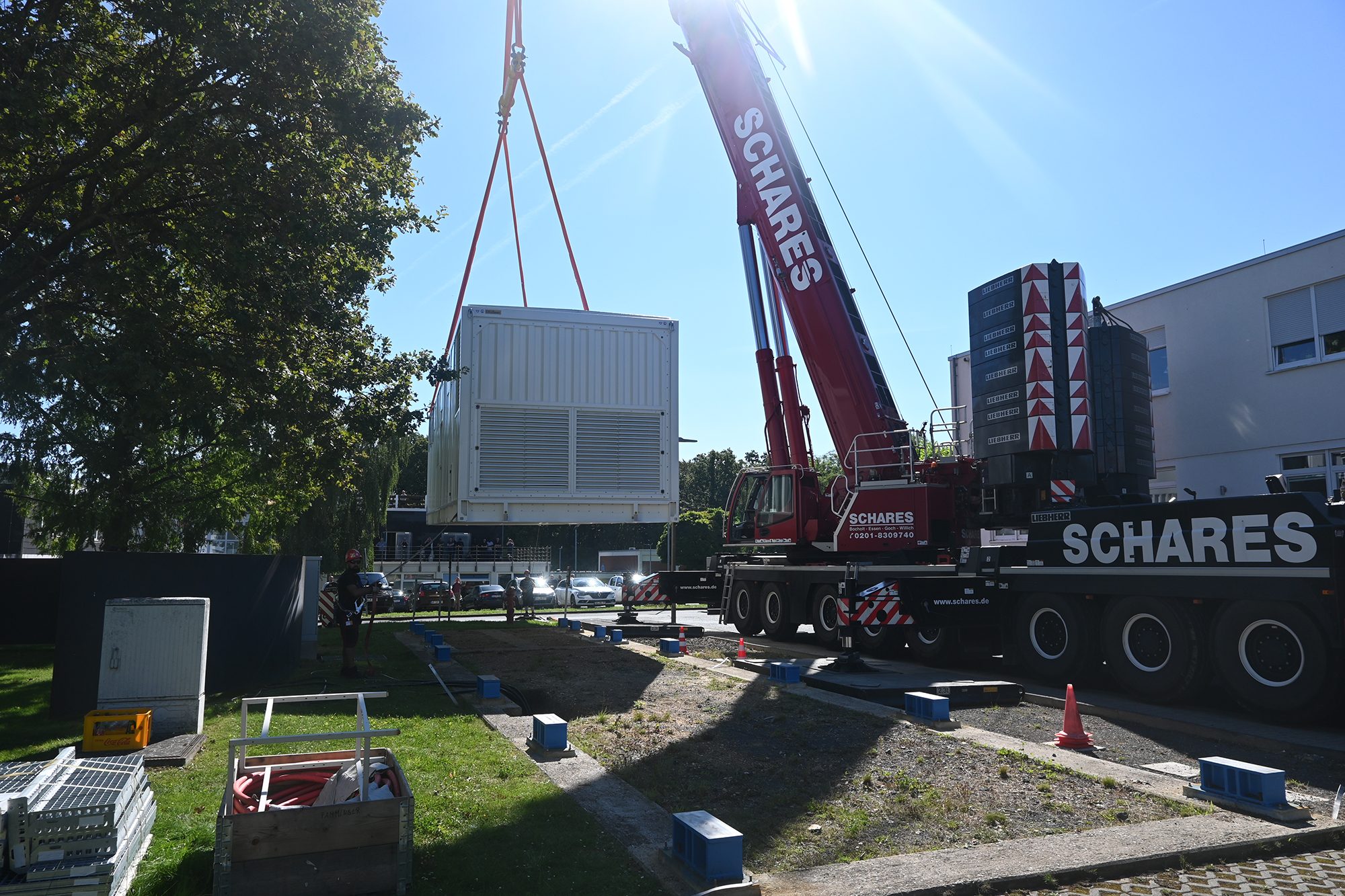GESTRA EUSST is taking off: Project milestone achieved



Networks of multiple radar units prove to be far superior to individual radar systems, as demonstrated by a study conducted by Fraunhofer FHR. The GESTRA EUSST project aims to showcase this in practice. The space surveillance radar, GESTRA, is set to be coupled with a newly developed receiver named EUSST. In the future, these two systems will provide more precise information by being spatially separated but interconnected. The GESTRA EUSST project was initiated in early 2021 under the auspices of the German Aerospace Center (DLR). The arrival of the GESTRA EUSST container in Wachtberg marks a significant milestone for the project.
Manufacturing in Austria: Customized Preparations for the Container
In preparation for the installation of the high-frequency equipment developed by Fraunhofer FHR, the container was fully equipped by a specialized company with the necessary infrastructure. Pamminger, a company from Austria that had already participated in the GESTRA project, was selected for this task. The scope of the contract included container construction, installation of cooling, air conditioning, and electrical systems within the container, as well as the lifting and positioning unit and compressed air technology. Following the successful completion of the work in Austria and approval by Fraunhofer FHR, the transport to Wachtberg was next on the agenda.
Arrival in Wachtberg: Project Milestone Achieved
With the arrival of the GESTRA EUSST container in September 2023 at the Fraunhofer FHR site in Wachtberg, a crucial project milestone was reached. After a lengthy journey of heavy transport from Austria to Germany, the container was unloaded from the semi-truck on the institute's grounds using a 450-ton crane and placed at its provisional location. In the preceding months, the foundation, including electronic infrastructure for the container, had been constructed at that site. In a coordinated effort involving the transporter, crane company, and Fraunhofer FHR, the 76-ton container was successfully lowered onto its new position.
Next Steps: Integration of Components and Initial Tests
After electrifying and commissioning the container's air conditioning in early 2024, the integration of the system components built by Fraunhofer FHR begins. The first step is the installation of the fire alarm system, followed by the gradual installation of the radar equipment. The plan is to have the entire hardware of the system installed and tested by the end of 2024. This includes the central electronic cabinet serving as the timing and control center of the radar system, where signals are generated and processed, and the status of all infrastructure components, such as refrigeration and air conditioning or the fire alarm system, is monitored. The 256 receiving modules are also integrated into the antenna. Subsequently, researchers at Fraunhofer FHR embark on extensive testing. A particular challenge in installing the system is the seamless integration of commercially available components, such as antenna peripherals or power supplies, with custom-built components from the institute. Concurrently with the hardware installation, software programming takes place, with a focus on the operational control of the system, i.e., how GESTRA EUSST can interact optimally with the GESTRA system.
After the completion of the setup and testing phase, GESTRA EUSST will enter interim operation at the Wachtberg site, providing initial measurement data to the German Armed Forces' Space Situational Awareness Center. The system is planned to be transported to its final location, likely in Mecklenburg-Vorpommern, in 2028, where it will continue its operations.
GESTRA TX2: Additional Transmitter Enhances Performance
Fraunhofer FHR conducted a study to determine the optimal geometric arrangement of sensors for radar networks. The result indicated that, for the GESTRA network, an additional transmitter located approximately 50 km away from the GESTRA EUSST system would be beneficial. The institute is concurrently working on the construction of this system, named GESTRA TX2.